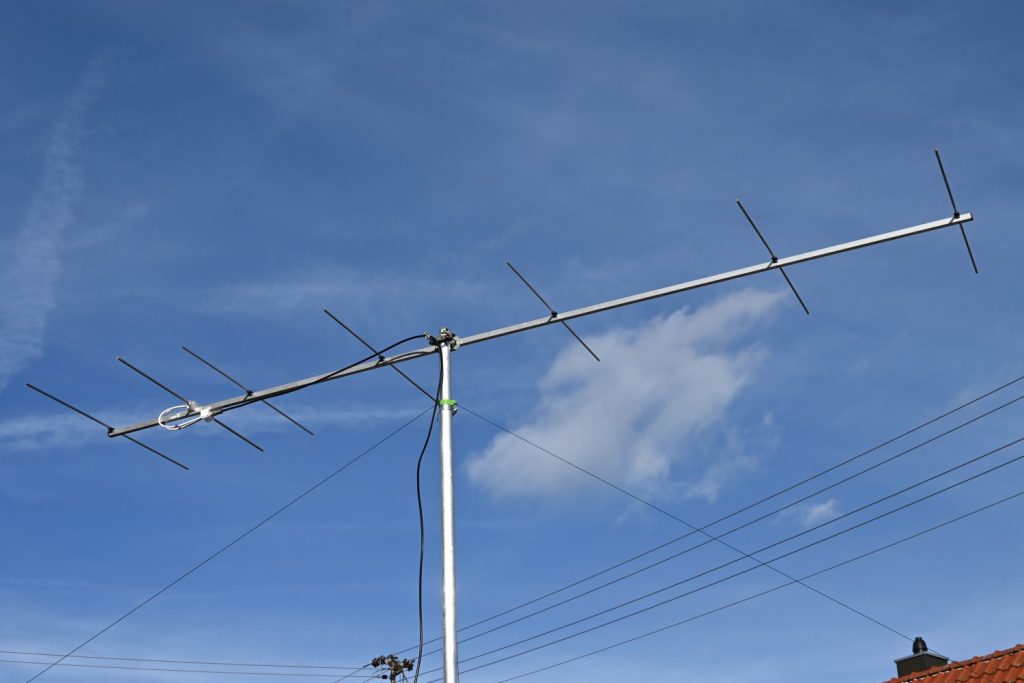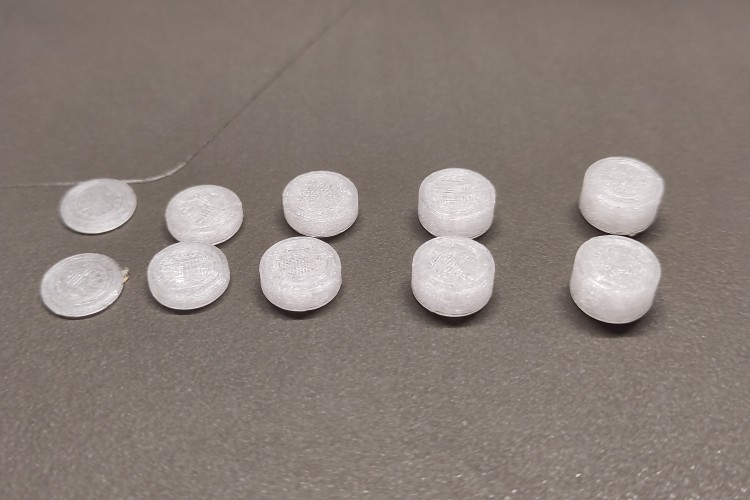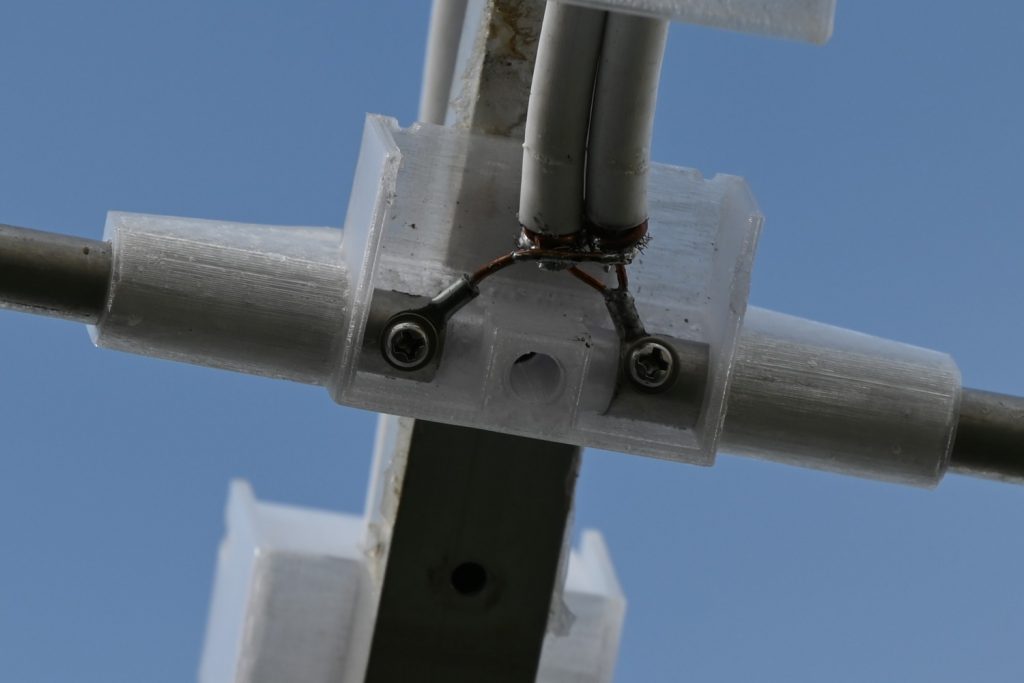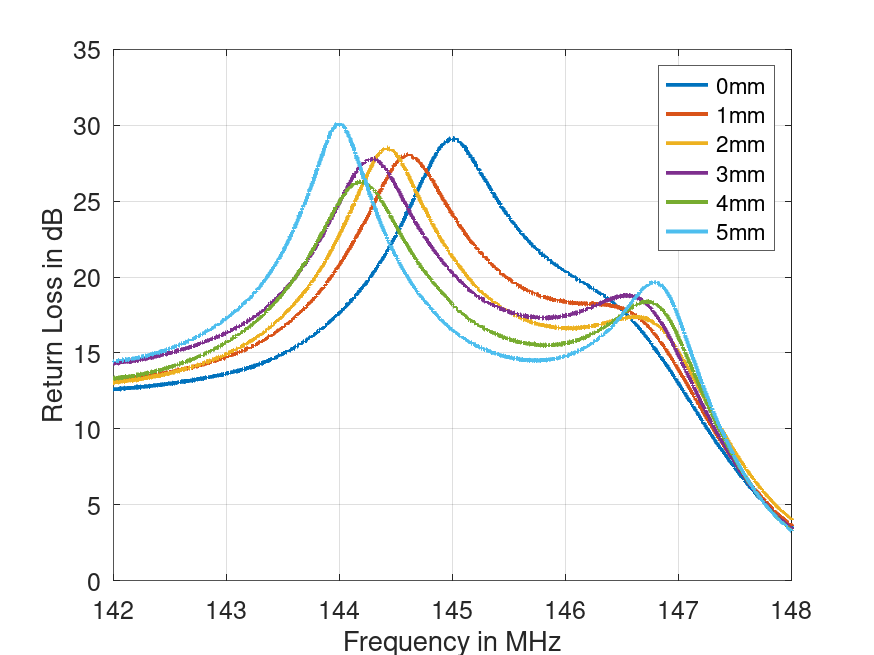Final Assembly and Testing

This is how the antenna looked after first assembly. It is not yet finalized in terms of feed line fixture and also the quarter wave transformation line needs some more care, but in general the setup works in sunny weather.
Tuning the Radiator
As it is typically very difficult to hit the correct length at first try, the usual approach is to leave the radiator a bit too long and cut it as required. As I ended up with a radiator that is too short at the beginning, I tried to lengthen it by inserting additional spacers in the center.


This actually helped and I could make a series of measurements to select the appropriate length. The return loss measurements are very good as expected. The results were obtained with calibration including the feed line to the antenna. As I do not have an N-type calibration kit, some imperfections due to the adapters I used remain which means the phase of the measurement is off by some degrees. Nevertheless, for amateur standards, the results should be acceptable.

The following table summarizes the results. As the spacing is applied on both sides of the dipole, the actual length is increased by twice the value. In the end, I ended up at the design frequency using the 3mm spacers. However, with the 1mm spacers, I would achieve the best performance over the whole 2m band.
| Spacing / mm | 0 | 1 | 2 | 3 | 4 | 5 |
| Frequency / MHz | 145.01 | 144.6 | 144.43 | 144.31 | 144.16 | 144.01 |
| Maximum Return Loss / dB | 29.1 | 28.1 | 28.5 | 27.8 | 26.3 | 30.1 |
Performance Evaluation On the Air
I made some QSOs during the 2024 BBT contest in February with a not yet finished version of the antenna and also tried FT8 and the results looked promising. I could at least hear stations nearly 500km away although I had around 3dB loss in my feed line. However, with my old IC706Mk2G, the frequency stability on 2m is very challenging for the digital modes. It works with strong signals but real weak signal operation will need some improvement on this side.
Closing Remarks
With this article, the short series could be finished. However, there are some theoretical aspects I observed and I would like to elaborate in more detail. Therefore there might be a fourth article that covers these but this may take some time…
